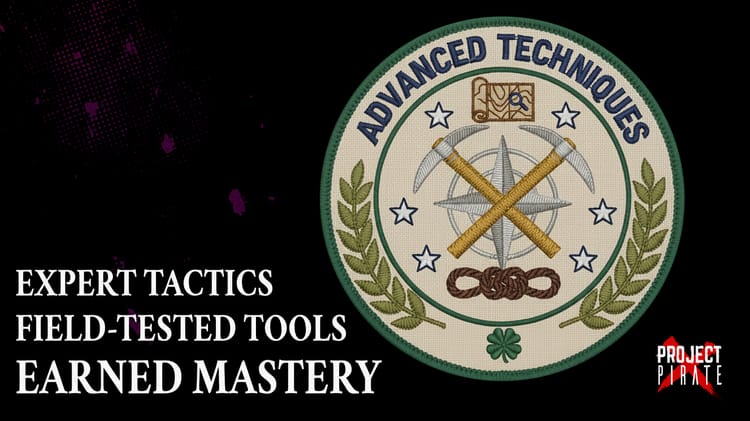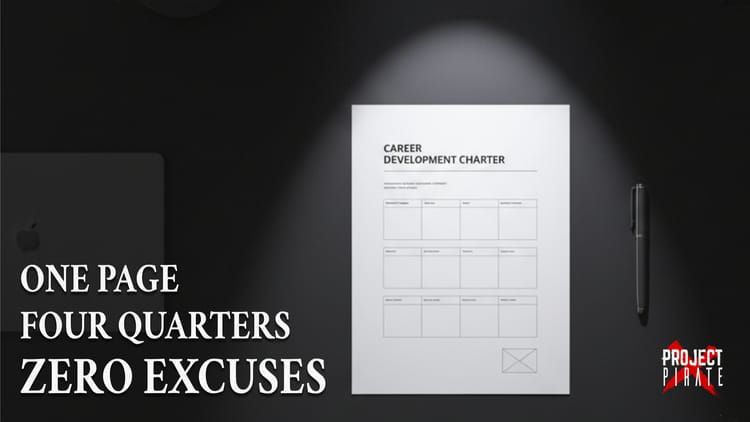Crafting Your Professional Presence: How the "Cut of Your Jib" Influences Career Success

In the maritime world of old, sailors could identify a vessel's origin and character from miles away simply by observing the distinctive shape or "cut" of its triangular jib sail. Today, the phrase "I like the cut of your jib" has evolved into a colourful expression of approval for someone's character, approach or general manner.
In the professional realm, this concept holds profound relevance. Your "professional jib"; the distinctive combination of traits, behaviours, and approaches that define your presence in the workplace can significantly influence your career trajectory and impact within organisations.
Core Traits That Elevate Professional Presence
1. Transparent Authenticity
Nothing builds trust faster than genuine authenticity combined with appropriate transparency. Trust forms the bedrock of any seaworthy professional relationship through:
- Intellectual honesty: Acknowledge knowledge gaps rather than bluffing. When you don't know something, say so, then commit to finding answers.
- Consistent alignment between words and actions: Ensure your behaviour consistently reflects your stated values and commitments.
- Appropriate vulnerability: Share relevant challenges without oversharing personal difficulties.
First Mate's Tip: After significant meetings, reflect on moments where you navigated toward impression management rather than authentic communication.
2. Strategic Communication Discipline
Your communication charts the course of how others perceive your competence - sometimes more than almost any other factor:
- Message clarity: Articulate complex concepts in straightforward language.
- Audience awareness: Tailor your communication to different stakeholders.
- Predictable communication rhythms: Establish reliable patterns for updates
Captain's Order: Create templates for different types of communication to ensure consistency in your messaging. Share it with your Crew so that regardless of who's involved in updates the same level of professionalism rings true from your programme or project.
3. The Communication Imperative
Communication skill often outweighs technical prowess in others' perception of your capability. A sailor with moderate technical skills but excellent communication is typically viewed as more capable than one with outstanding technical ability but poor communication... if you're not close enough to the detail!
This highlights essential aspects of crafting your professional presence:
- Technical-communication integration: Develop both domain expertise and the ability to convey it. Both skills should be developed in parallel.
- Relationship cultivation: Build trust-based professional relationships that weather organisational storms.
- Strategic visibility: Ensure your contributions are understood by decision-makers and visible throughput the voyage.
Navigator's Insight: Identify one complex technical concept and practice explaining it to different audiences; from fellow specialists to new crew members. This allows you to develop the ability to take a core concept and tailor it to different audiences.
4. Cross-Cultural Navigation
In today's global business environment, your professional presence must translate effectively across cultural boundaries. What constitutes appropriate professional behavior in one culture may read very differently in another - Your professional presence must translate effectively across cultural waters.
- Cultural intelligence: Understand professional norms of cultures you frequently engage with.
- Adaptive communication: Adjust your style based on cultural context.
- Curious engagement: Approach differences with genuine interest rather than judgment.
Quartermaster's Counsel: Before cross-cultural interactions, research specific business norms and adapt accordingly.
5. Digital Presence Mastery
The modern professional operates in both physical and digital realms, with your virtual presence often forming first impressions before any in-person meeting:
Consistent digital identity. Ensure your online professional profiles conveys a cohesive story aligned with your in-person presence:
- Consistent digital identity: Ensure online profiles convey a cohesive narrative.
- Virtual meeting sophistication: Develop skills for effective remote engagement, including appropriate on-camera presence, effective screen sharing and virtual facilitation techniques.
- Digital communication nuance: Recognise that written communication requires greater precision. Your "digital jib" is increasingly visible and may be scrutinised more widely than your in-person presence, particularly in distributed or hybrid work environments.
Ship's Log Entry: Record yourself in virtual meetings and review critically to enhance how you present in digital environments. Review and identify three specific improvements you can make to enhance how you present in virtual environments.
6. Balanced Decisiveness
Organisations value professionals who navigate the balance between collaborative input and decisive action:
- Appropriate consultation: Gather diverse perspectives when stakes are high.
- Clear decision ownership: Be explicit about who holds the helm for final decisions and have this documented and agreed from the start of the journey.
- Transparent rationale: Articulate the "why" behind your course corrections; focus on the value and business outcomes versus technical specifics.
Helmsman's Practice: Document your decision-making process to understand how you weigh different factors. Identify which inputs you considered, how you weighted different factors and how you communicated the rationale.
7. Value-Centred Focus
Distinguished professionals orient activities toward meaningful outcomes:
- Business impact emphasis: Frame conversations around organisational treasure rather than compliance. That translation to Sponsor language can have a major impact on the agreed outcomes.
- Strategic filtering: Develop criteria for what deserves immediate attention versus what can wait.
- Resource stewardship: Demonstrate thoughtful allocation of time and resources
Captain's Wisdom: Review your task list to identify low-value activities you can jettison to create space for higher-impact work. Always scan the horizon for opportunities to deliver more value.
8. Proactive Problem Navigation
How you approach challenges often defines your professional reputation more than your handling of smooth operations:
- Early issue identification: Spot potential storms before they become critical
- Solutions orientation: Present challenges alongside thoughtful options.
- Appropriate escalation judgement: Know when to solve problems independently and when to include leadership. There is a nuance to this - where certain visibility of problems to leadership can be positive as it shows ability to resolve these and steady the ship (use your intuition on deciding when).
Lookout's Directive: Create a simple risk identification protocol with questions that help anticipate potential issues. Always look ahead and visualise the potential issues which 'could' happen, then determine via probability where proactive action is required.
The Appearance Paradox: When Perception Trumps Policy
Despite casual dress codes and "bring your whole self to work" cultures, perception often overrides policy. Consider this tale:
A brilliant technical specialist embraced our company's casual dress policy. Despite delivering exceptional results, he was surprised when a less experienced colleague who typically wore smarter attire was promoted before him. A candid conversation revealed the unconscious bias: despite official policy, leadership perceived the more formally dressed employee as "taking things more seriously."
Lesson: While company policies set official standards, human perception operates on deeper levels. Be conscious of the signals your choices send in your specific organisational context. Find ways to express your authentic self while acknowledging the perceptual environment in which you operate.
Navigating Professional Transitions and Challenges
Organisational Culture Transitions
As you move between organisations; whether from corporate to startup, public to private sector, or between industries - your professional presence may require thoughtful recalibration:
- Cultural observation period: Study the unwritten rules of your new waters.
- Selective adaptation: Identify which aspects of your style are your North Star versus which can adjust.
- Value translation: Frame your strengths in terms that resonate with new crew mates.
Generational Intelligence
Today's workplace encompasses multiple generations working side by side, each with different expectations about professional presence:
- Multi-generational fluency: Understand how different generations perceive professionalism.
- Flexible communication: Adjust your approach while maintaining authenticity.
- Bridge-building mindset: Translate between generational perspectives.
Recovery From Professional Missteps
Even the most skilled sailor occasionally runs aground. Your approach to recovery often determines whether a mistake becomes a career-limiting moment or a growth opportunity:
- Swift ownership: Acknowledge mistakes directly without overly harsh self-criticism.
- Impact recognition: Demonstrate understanding of effects on others.
- Corrective action: Develop specific steps to right the ship (and prevent it happening again in the future).
- Consistent rebuilding: Recognise that trust rebuilds through consistent action over time, not through single apologetic gestures.
The Continuous Development Imperative
Your professional presence isn't static, it requires ongoing cultivation and evolution. The most respected professionals approach this development with intentionality through:
- Regular self-assessment: Evaluate how your actions are perceived. Soliciting specific feedback from trusted colleagues on your strengths and growth areas.
- Deliberate experimentation: Step beyond established patterns. Establishing small, safe experiments in communication or leadership approaches
Determining clear success criteria for new professional practices. - Learning community investment: Build relationships with professionals whose "jib" you admire. Participating in communities of practice related to your field.
The Compound Returns of Professional Presence
Investing in your professional presence yields significant dividends: Investing in your professional presence yields significant dividends over time:
- Enhanced organisational impact: Increased invitations to strategic initiatives. More effective cross-functional collaboration as others seek your input.
- Career opportunity expansion: Internal sponsors who advocate for your advancement. Reputation-based doors that open without explicit application or request.
- Personal satisfaction: Greater alignment between values and work approach. Increased confidence in navigating organisational challenges and more authentic professional relationships based on mutual respect.
Conclusion: Hoisting Your Distinctive Professional Sail
Just as each ship's jib provided a distinctive silhouette on the horizon, your professional presence creates a unique impression throughout your career voyage. By intentionally developing the qualities that define your approach, you create a professional identity that not only advances your career but enhances your impact on the organisations and shipmates you serve.
The most respected professionals aren't simply executing tasks.. they're bringing a distinctive combination of qualities to every interaction. By thoughtfully crafting the "cut of your professional jib," you create a presence that others not only notice but actively seek to sail alongside time and again.




